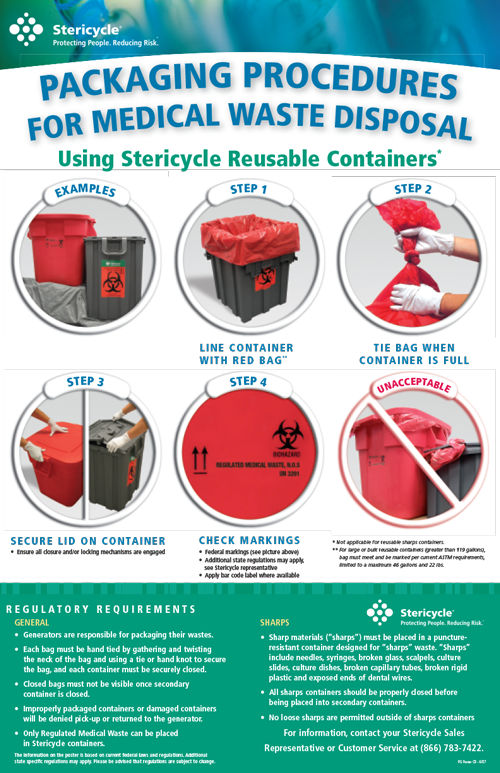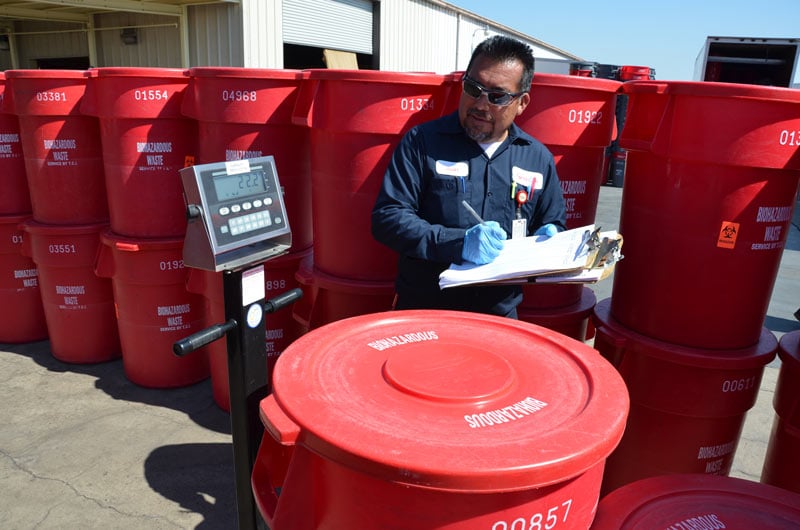Compliance and Rules for Medical Garbage Disposal
Compliance and guidelines for medical waste disposal play an essential duty in making certain the safety and security and wellness of both medical care specialists and the basic public. Correct monitoring of medical waste is vital to prevent the spread of infections, protect the setting, and maintain public health. This requires adherence to details standards and procedures set forth by regulatory companies and bodies. These laws incorporate numerous elements, consisting of the category and segregation of clinical waste, appropriate storage and taking care of procedures, in addition to transportation and disposal techniques. By adhering to these laws, healthcare centers can lessen the risk of contamination and prospective injury to people and the atmosphere. This write-up will explore the significance of conformity and offer an introduction of the key guidelines governing clinical waste disposal.
Importance of Conformity
The importance of conformity with guidelines for medical waste disposal can not be overemphasized. Proper disposal of clinical waste is vital for making certain the security and well-being of healthcare workers, patients, and the public. Clinical waste, that includes products such as used needles, contaminated handwear covers, and biomedical waste, can present significant health and wellness dangers otherwise dealt with and thrown away effectively.
Compliance with guidelines makes sure that medical waste is managed in such a way that lessens the capacity for exposure to transmittable conditions and harmful substances - medical waste disposal service. It assists stop the spread of infections, such as HIV, hepatitis B and C, and other bloodborne pathogens. Compliance additionally plays an important duty in securing the setting by preventing contamination of water resources, soil, and air
Failing to follow policies can lead to extreme effects for medical care centers, including penalties, legal action, and damages to their online reputation. In addition, non-compliance might jeopardize the wellness and safety of health care employees, people, and the area.
Conformity with regulations for medical garbage disposal requires adherence to particular standards and protocols. These may include proper partition, product packaging, labeling, and storage space of medical waste. It likewise entails utilizing approved disposal methods, such as incineration, autoclaving, or landfilling, depending on the sort of waste.
Regulatory Agencies and Bodies
Governing firms and bodies play a vital role in supervising compliance with policies for clinical garbage disposal. These companies are accountable for setting criteria, standards, and protocols to guarantee the appropriate and safe handling of clinical waste. They enforce and check compliance to safeguard public health and the atmosphere.
One of the most noticeable regulatory companies in the USA is the Epa (EPA) The EPA is in charge of controling the storage, transport, treatment, and disposal of clinical waste. They establish standards for waste generators, carriers, and therapy facilities to follow, ensuring that all necessary preventative measures are required to stop the spread of illness and contamination.
An additional vital regulatory body is the Occupational Safety And Security and Health And Wellness Administration (OSHA) OSHA sets guidelines and criteria to protect workers from job-related threats, consisting of those pertaining to medical waste. WasteX Medical Waste Disposal. They provide guidelines for the risk-free handling and disposal of clinical waste to safeguard staff members in medical care centers
Along with these federal companies, individual states additionally have their very own governing bodies that manage clinical garbage disposal. These firms might have their very own certain policies and needs that need to be complied with.

Classification and Segregation of Medical Waste
To guarantee appropriate monitoring of clinical waste, it is important to classify and segregate it according to established standards and methods. medical waste disposal service. Classification and partition play a critical role in minimizing the threat of infection, safeguarding the atmosphere, and guaranteeing the safety and security of healthcare workers and the public
Clinical waste is identified into various groups based upon its possible risk level. These groups include transmittable waste, pathological waste, sharps waste, pharmaceutical waste, chemical waste, and contaminated waste. Each group calls for certain handling, disposal, transport, and storage methods to lessen the risk of direct exposure and contamination.
Segregation of medical waste entails dividing different sorts of waste at the resource. This process ensures that waste with different danger levels is not combined, minimizing the capacity for cross-contamination and making disposal treatments a lot more effective. Proper segregation is accomplished via the use of color-coded labels and containers, which help health care workers and waste administration personnel manage each type and determine of waste correctly.
In enhancement to classification and partition, health care centers need to additionally follow local, state, and federal guidelines concerning medical waste monitoring. These regulations detail details requirements for storage, transport, treatment, and final disposal of clinical waste, making sure conformity and preserving public health and wellness and safety.
Proper Storage Space and Handling Procedures
Correct storage space and taking care of treatments play an important role in making sure the certified and safe monitoring of medical waste. Medical waste, which consists of things such as made use of syringes, infected gloves, and ended medications, can position serious wellness and environmental dangers otherwise taken care of appropriately. As a result, it is crucial for healthcare centers and other generators of medical waste to carry out strict storage space and dealing with methods.
To start with, medical waste should be saved in durable, leak-proof containers that are especially made for this objective. These containers must be classified with the global biohazard sign and words "medical waste" to plainly indicate the components. In addition, the containers need to be maintained safely closed to protect against any type of prospective leak or spillage.
Moreover, it is essential to segregate different sorts of medical waste to stop cross-contamination. Sharps, such as needles and scalpels, must be kept in puncture-resistant containers to reduce the threat of injuries - WasteX Medical Waste Disposal. Chemical waste, such as solvents and disinfectants, ought to be kept separately from other sorts of clinical waste to avoid chemical reactions or dangerous exposures

Transport and Disposal Approaches
Health care centers need to guarantee the safe transport and correct disposal of their medical waste to follow regulations and protect public health and wellness. Transport and disposal methods play an essential function in avoiding the spread of contagious illness and decreasing the ecological effect of clinical waste.
To transfer clinical waste, health care facilities need to make use of watertight and puncture-resistant containers that are classified with the biohazard symbol. These containers must be safely secured to stop any kind of leak throughout transportation. In addition, health care facilities need to develop methods for the transportation procedure, including using qualified personnel and specialized automobiles.
As soon as the clinical waste gets to the disposal facility, it undertakes different techniques of treatment. One common technique is incineration, which involves melting the waste at high temperature levels to ruin virus and decrease the volume of waste. An additional method is autoclaving, which uses heavy steam and pressure to decontaminate the waste. After treatment, the waste is usually sent out to a garbage dump or a waste-to-energy facility for last disposal.
It is crucial for medical care facilities to deal with web link licensed and allowed waste monitoring business to make sure appropriate transportation and disposal of medical waste. These companies have the experience and resources to take care of medical waste safely and in conformity with regulations.
Verdict
To conclude, compliance with policies for clinical garbage disposal is of utmost importance to ensure public wellness and security. Regulatory firms and bodies play an essential role in implementing these guidelines. Proper classification and segregation of medical waste, in addition to adhering to ideal storage and taking care of procedures, are necessary to protect against contamination and the spread of diseases. Appropriate transport and disposal approaches need to be executed to reduce environmental influences. On the whole, adherence to compliance and guidelines is necessary to effectively take care of medical waste.
Medical waste, which consists of items such as used needles, polluted gloves, and biomedical waste, can present major health dangers if not dealt with and disposed of properly.
These classifications include infectious waste, pathological waste, sharps waste, pharmaceutical waste, chemical waste, and contaminated waste.Partition of medical waste involves dividing various kinds of waste at the source. Appropriate partition is achieved with the use of color-coded labels and containers, which assist health care workers and waste management personnel identify and handle each kind of waste properly.
Chemical waste, such as solvents and disinfectants, need to be saved separately from various other types of clinical waste to protect against chemical responses or dangerous exposures.